When mud and fire converge across Yunnan
Yunnan is one of the cradles of pottery culture, with pottery-making dating back to the Neolithic era. The discovery of Neolithic pottery cups and jars in Baiyang Village, Bincun County, Dali Bai Autonomous Prefecture, reveals that Yunnan’s pottery craftsmanship boasts a history of over 5,000 years. Through thousands of years of inheritance and development, Yunnan pottery has evolved into a shining cultural symbol, continuously revitalized by ongoing innovation.
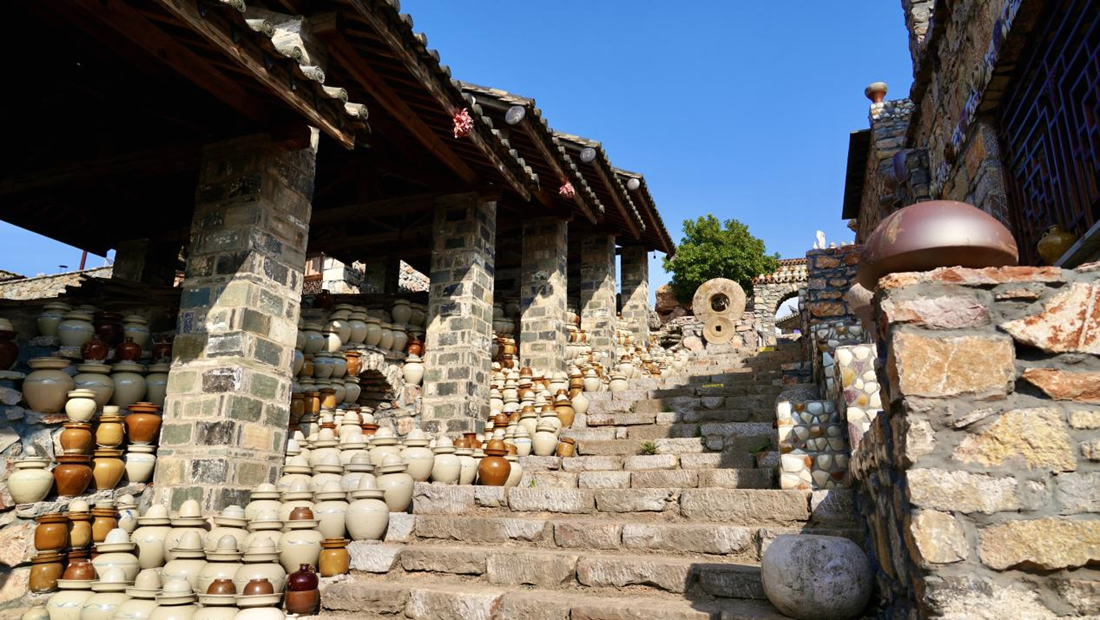
The “Taochaju Tian’s Kiln” in Jianshui, Yunnan Province
A kiln that has burned for over a thousand years
Upon entering the “Taochaju Tian’s Kiln” in Jianshui, Yunnan Province, visitors are greeted by a serene courtyard featuring traditional architecture, complemented by a stunning display of purple pottery. The kiln’s owner, Tian Jing, graciously shares insights into the craftsmanship and cultural heritage of purple pottery with visitors from diverse ethnic backgrounds.
Jianshui is recognized as a national historical and cultural city in China, home to diverse ethnic groups including Han, Yi, Hui, Hani, Dai, and Miao. The blend of Han culture with the traditions of local minority groups has allowed Jianshui’s purple pottery to stand out amid China’s myriad pottery arts.
“For years, Jianshui purple pottery has absorbed various influences, marrying the ancient bronze culture of the Dian Kingdom with the characteristics of Yunnan’s ethnic minorities,” said Tian, a provincial representative of Jianshui purple pottery craftsmanship. Her hand-crafted teapots are distinctly unique, reflecting over a decade of dedication to the protection, preservation, and promotion of this traditional art form.
After over 1,000 years of development, the capital of purple pottery has embraced a revitalized identity. Archaeological studies confirm that Jianshui has been a center of primitive pottery production for thousands of years. Throughout the centuries—spanning the celadon of the Song Dynasty, the blue and white porcelain of the Yuan Dynasty, the coarse pottery of the Ming Dynasty, and the purple pottery of the Qing Dynasty—the craft has been lovingly preserved and passed down through generations of artisans.
Today, with tourism flourishing, the integration of pottery and tourism in Jianshui has yielded exciting new developments. In the cultural industry park filled with purple pottery, visitors from around the world can not only discover ideal products but also participate in hands-on experiences that highlight the unique charm of this traditional craft.
At Beishan Pottery Park in Jianshui County, a variety of purple pottery shapes adorn the tranquil bamboo groves and lakeside structures, with over 10,000 jars creating a breathtaking visual display. “We have established a purple pottery craft experience area in the park, attracting pottery study groups from across the country and overseas who come to visit and learn,” said Xiang Bingcheng, head of Beishan Pottery Cultural Industry Co Ltd.
In 2011, Xiang Bingcheng took a bold step by departing from traditional sales methods for purple pottery. By harnessing the rich culture of purple pottery and the beauty of ceramic landscapes, he created a cultural park that seamlessly integrates purple pottery with tourism. This initiative has not only enhanced the park’s visibility but has also deeply embedded the significance of purple pottery into the hearts of many.
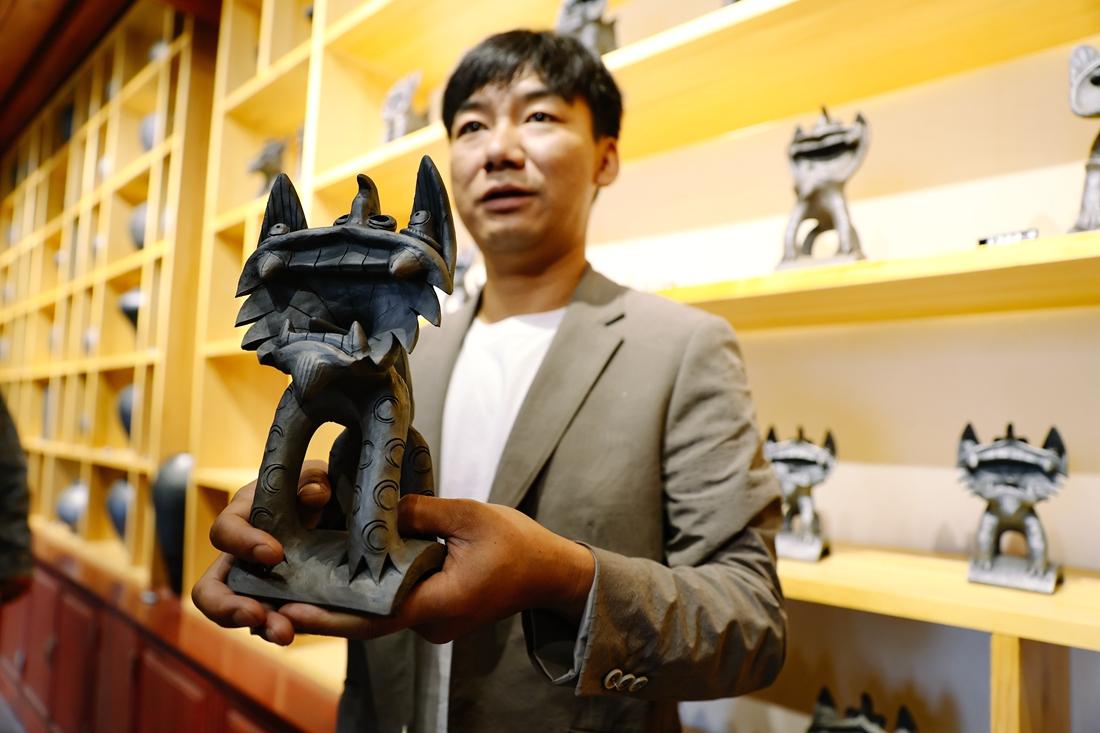
38-year-old Dong Zhiming is a representative inheritor of the Bai pottery-making technique from Jianchuan County in Dali Prefecture.
A “cat” and its artistic evolution
The “tile cat,” a traditional handcrafted pottery artifact intrinsic to Yunnan’s folk culture, is commonly found in regions such as Kunming, Yuxi, Wenshan Zhuang and Miao Autonomous Prefecture, and Dali Bai Autonomous Prefecture. This decorative piece is typically positioned on the ridges and eaves of traditional Yunnanese homes, representing good fortune and protection. However, as times have evolved, this traditional architectural motif has started to “descend” from rooftops, discovering new expressions within contemporary homes.
At 38 years old, Dong Zhiming, a representative inheritor of the Bai pottery-making technique from Jianchuan County in Dali Prefecture, was born into a family of potters. He began learning the art of black pottery making from his father, Dong Yuechang, after finishing middle school. Traditionally, black pottery was primarily used for creating items such as washbasins and flowerpots, but with changing times, sales of these customary items have steadily declined.
In 2013, Dong Zhiming and his father sought to pivot their craft. They noticed that many visitors were drawn to the uniquely shaped tile cats. Combining Jianchuan’s wood carving techniques, Dong designed a series of cute tile cats. The market responded positively to this new product line, and today, the Dong family alone has sold over 10,000 tile cats in various shapes and sizes.
Responding to visitor interest, Dong also launched a tile cat-making experience program, which has proven popular among children and teenagers. “Children’s imaginations are boundless; they inspire me to create more innovative tile cats based on their designs,” he explained.
Zhang Cai is one of the few remaining craftsmen in Kunming still dedicated to making tile cats. As a bearer of intangible cultural heritage, he has been crafting these figures for over 30 years. “We must cater to the tastes of younger generations and innovate on the foundation of tradition,” Zhang said. To achieve this, he has scaled down the size of the tile cats, transforming them into small decorative pieces suitable for coffee tables and desks.
Zhang now dedicates much of his energy to teaching. Periodically, he travels to universities such as Kunming University to share the craft of tile cat making with students. He takes great joy in seeing the infusion of youth into the tradition, resulting in tile cats that have taken on more adorable forms, often crafted into various cartoon designs.
Today, the tile cat has evolved into a popular cultural symbol in Yunnan. It can be found everywhere, from café decorations to displays in craft shops. At tourist attractions in Yunnan, tile cats have become essential souvenirs for visitors. In 2022, the tile cat was officially recognized as part of Yunnan Province’s representative list of intangible cultural heritage.
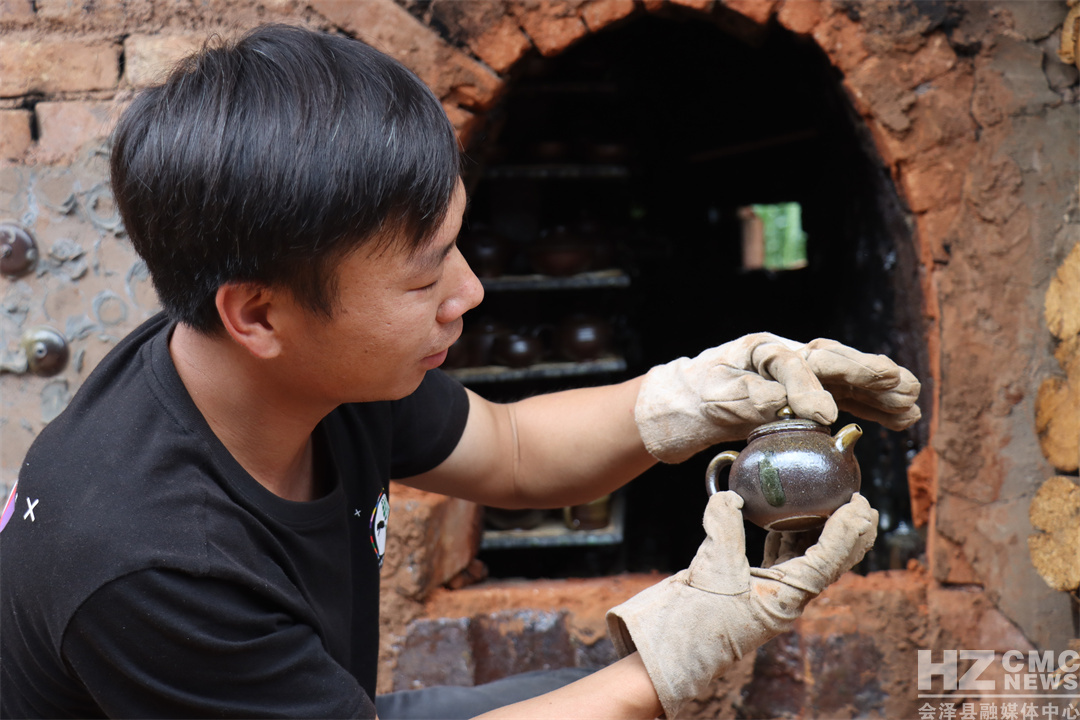
Deng Keman, a 34-year-old villager, is the ninth-generation inheritor of Huize’s pottery.
A village united in protecting black pottery
As evening falls, the village of Tangdui in Yunnan’s Diqing Zang Autonomous Prefecture, Shangri-La City, comes alive with the scent of smoke rising from chimneys. Inside traditional Zang homes, the aroma of broth wafts from a modern kitchen, emanating from a simple, rustic black clay pot crafted by local artisan Lurong Enzhu.
At the age of 15, Lurong Enzhu began learning pottery from his father, Sunnuo Qilin, a representative inheritor of the national intangible cultural heritage of Zang black pottery. At that time, the black pottery of Nixi was relatively unknown, with only six artisans in the village. The production was low and sales limited, and the income only sufficed to cover basic food and living necessities.
In recent years, Shangri-La City has launched a cultural inheritance project focused on Zang black pottery, establishing two workshops dedicated to the craft. This initiative has provided villagers with a place to learn black pottery making skills free of charge, ensuring that the tradition is passed down to future generations.
Meanwhile, in Huize County of Qujing City, the village of Wanizhai is renowned for its pottery. In this small village, covering only 11 square kilometers, there are over 150 practitioners of earthenware, with their products even exported to countries like Vietnam.
Deng Keman, a 34-year-old villager, is the ninth-generation inheritor of Huize’s pottery. He proudly said, “The clay we use can withstand temperatures over 1,300 degrees Celsius; it’s one of the rare fire clays.”
Building on the foundation of traditional pottery techniques, Deng has successfully embraced innovation, creating earthenware products that combine artistry, aesthetics, and practicality. “As a new-generation inheritor, I strive to produce pottery and crafts that consumers will love,” he said.
In the small village of Miaocun, situated in Yunnanyi Town, Xiangyun County, the Yinyan Dragon Kiln production base features a variety of handmade pottery. Site leader Cha Jialong enthusiastically was showcasing teapots and cups during a live stream, saying, “Come, take a look! This is a handmade dragon kiln-fired teapot; it brews tea beautifully……”
Cha Jialong studied e-commerce at university and returned to his hometown after graduating in 2018 to open a Taobao store. He started sourcing traditional pottery, including clay pots and bowls crafted by local artisans, and selling them on e-commerce platforms. Through live streaming, he shares the stories and histories of these traditional crafts, successfully connecting with customers throughout China.
Today, Yunnan’s diverse pottery offerings increasingly blend modern aesthetic elements and functional designs, integrating with various industries such as “pottery plus small appliances,” “pottery plus coffee,” and “pottery plus e-commerce.” This approach not only revitalizes traditional pottery but also enhances contemporary living spaces with cultural charm and warmth.
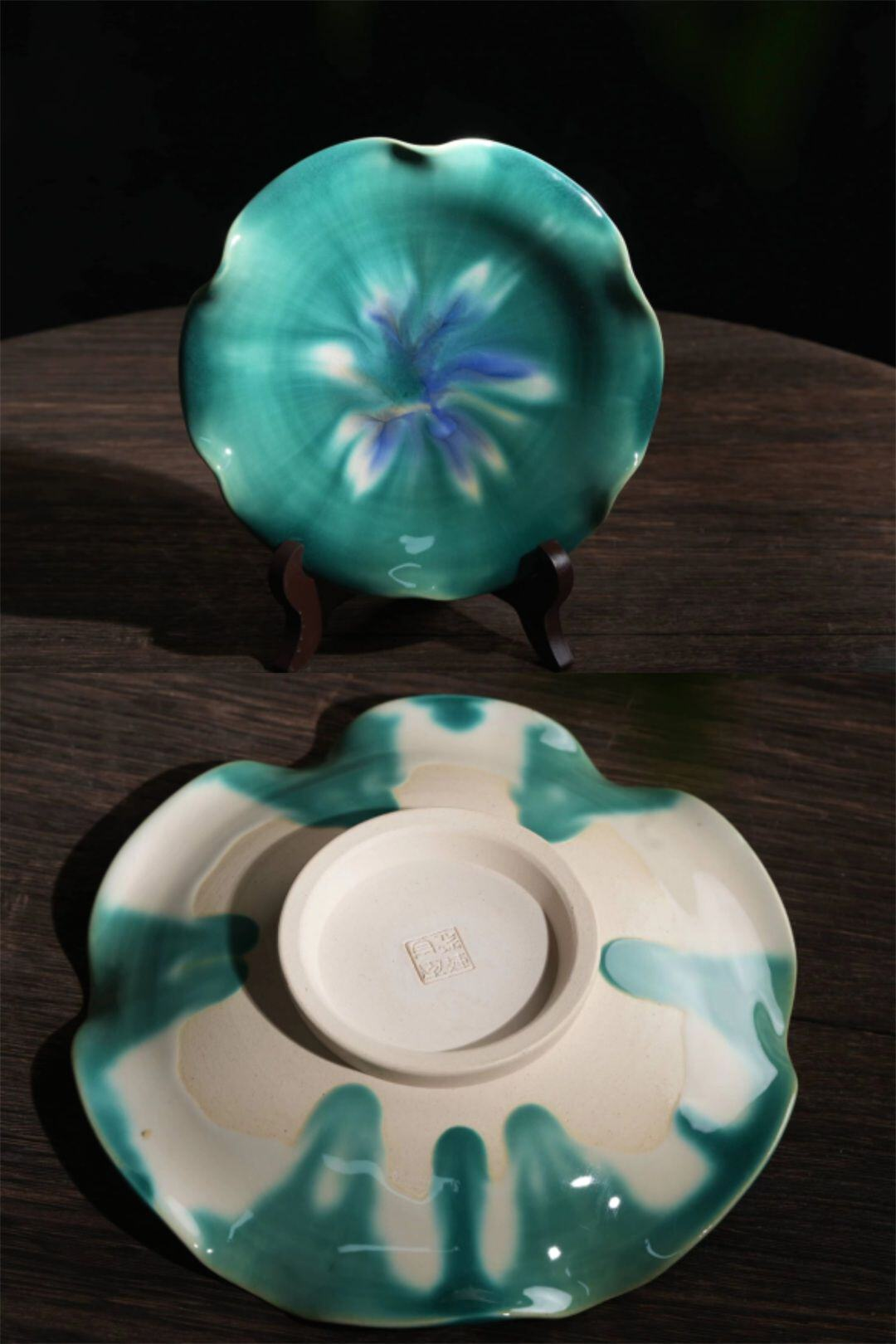
The Huaning glazed pottery
Read more:
The art of pottery: from earth to fire
The process of pottery making is intricate and refined, generally divided into several key steps:
Clay Preparation: High-quality clay is selected and then subjected to processes such as sifting, washing, and aging to achieve optimal plasticity and adhesion.
Making Pottery Clay: The prepared clay is mixed with water and kneaded repeatedly until a uniform, fine texture is achieved.
Forming the Shape: Artisans use various techniques such as hand-throwing, pinching, molding, or wheel-throwing to give the clay its initial shape.
Decoration and Carving: Using tools instead of pens, artisans carve vibrant patterns and designs onto the pottery, imbuing each piece with unique cultural significance and aesthetic value.
Firing: The shaped and decorated pottery is placed in a kiln, where high temperatures transform the clay into hard, durable pottery.
Sanding and Polishing: Once fired, the pottery undergoes meticulous sanding and polishing to achieve a smooth, refined surface, presenting the final, perfect form.
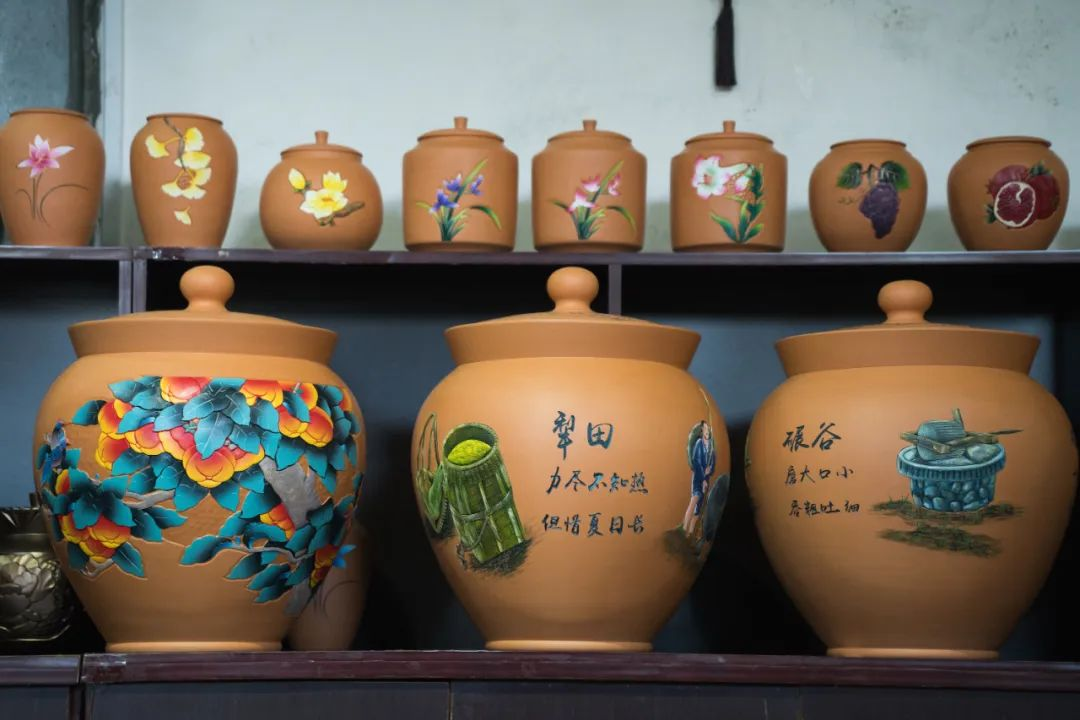
The Baoshan Jinji pottery
Famous pottery genres of Yunnan
Jianshui purple pottery, recognized as one of China’s four renowned pottery styles, is distinguished by its unique craftsmanship, which includes a carving and filling technique, as well as a decorative style known for its “broken strokes.” This pottery has become highly sought after by scholars and connoisseurs alike. In February 2008, the firing technique for Jianshui purple pottery was included in the second list of China’s Intangible Cultural Heritage.
Nixi Black Pottery is commonly used by residents in Shangri-La, located in the Diqing Tibetan Autonomous Prefecture. This type of black pottery features a minimalist design, highlighting the beauty of simplicity in its form. In June 2008, the firing technique for Nixi black pottery was included in the second list of China’s representative intangible cultural heritage.
Dai slow-wheel pottery is a prominent example of primitive pottery in China. Beyond everyday utensils, Dai pottery is also used in architectural decorations for Buddhist temples and in offerings. In June 2006, the technique of making Dai slow-wheel pottery was included in the first list of China’s representative intangible cultural heritage.
Huaning glazed pottery is made from a unique high-quality white clay found in Huaning County, Yuxi City. The glazes produced vary in color, with hues resembling pure gold and emerald, earning it the title of the “living fossil” of ancient Chinese pottery.
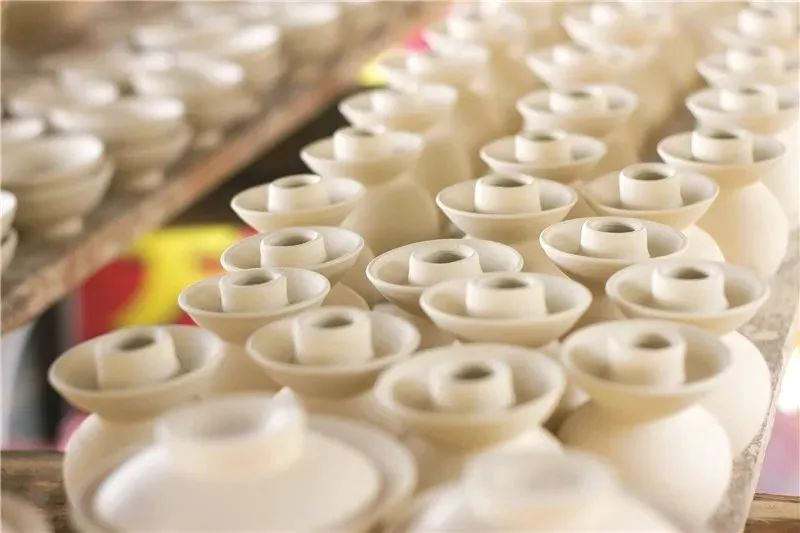
The Lincang pottery
Lincang pottery, a traditional handmade craft originating from Wanyao Village in Lincang City, has been passed down for over 300 years. This earthenware comes in a variety of forms and features floral, dragon, and phoenix patterns embedded in its outer walls, making it both rustic and practical.
Zhenyuan black pottery, made from high-quality black clay (ant nest soil) native to Zhenyuan County in Pu’er, possesses a unique texture described as “as thin as paper, as shiny as lacquer, producing sounds like chimes, and as hard as porcelain.” In 2009, Zhenyuan black pottery was included in the second list of Yunnan’s intangible cultural heritage.
Baoshan Jinji pottery involves 13 distinct production steps. Archaeological fragments unearthed from the Neolithic site at Jiangtai Temple in Jinji Township, Longyang District, Baoshan City, date the history of Jinji pottery back more than 4,000 years.
Text by our staff correspondents
Translated by YNTA